Please double-click to open
AWS (Amazon Web Services)
Introduction
AWS (Amazon Web Services) is a division of Amazon (a leading company in eCommerce). Amazon offers on-demand cloud computing platforms including storage, data analysis, etc. under the general heading of AWS. With a massive market share of 35%, Amazon provides its services to people, businesses, and governments. Depending on their needs, Amazon Web Services customers can utilize a whole virtual cluster of machines at any moment. The internet is used to enable the complete service. Amazon's cloud computing infrastructure, AWS (Amazon Web Services), is sizable and constantly expanding. It mixes packaged software as a service (SaaS), infrastructure as a service (IaaS), and platform as a service (PaaS) solutions.
Amazon is regarded as the most potent and adaptable option available when it comes to cloud service providers. The portfolio of Amazon Web Services includes more than 100 services, such as computing, databases, managing infrastructure, developing applications, and security.
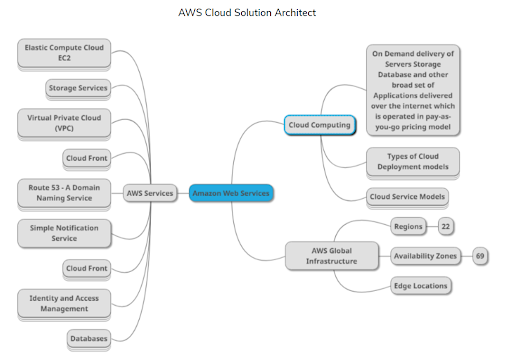
Pricing policies at AWS and rivalry
For its cloud services, AWS offers a pay-as-you-go model, either on a per-hour or per-second basis. For clients that prepay in full or commit to one- or three-year usage commitments, there is now the opportunity to reserve a predetermined amount of computes capacity at a discounted rate.
AWS Free Tier is another option for using AWS services if prospective clients are unable to pay the fees. Users can access up to 60 products through the AWS Free Tier, where they can begin creating on the AWS platform and getting hands-on experience with AWS services. Three options are available for the Free Tier: always free, 12 months free, and trials. In the public IaaS market, AWS mainly competes with Microsoft Azure, Google, and IBM.
Availability
Availability Zones: Amazon Web Services offers services from numerous data centers dispersed throughout AZs in various global regions. A zone with many actual data centers is known as an AZ.
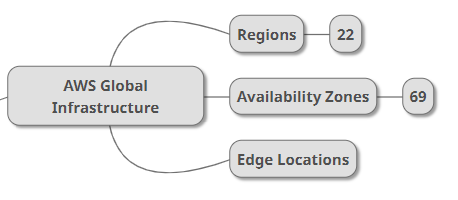
Computing
Amazon Elastic Computation Cloud (EC2): EC2 is a service that offers virtual servers for compute power, referred to as EC2 instances.
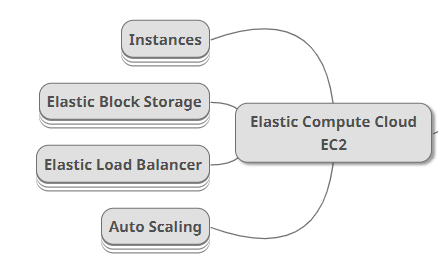
AWS Lambda is a server-less, event-driven computing technology offered by Amazon as a component of AWS. It is a computer service that automatically controls the resources needed to run code in response to events.
Storage
Simple Storage Service (S3) by Amazon: Scalable object storage for analytics, data collecting, and backup is offered via S3. An IT expert organises data and files by storing them as S3 objects—which can be up to 5 GB in size—within S3 buckets.
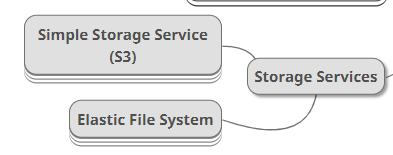
Amazon Glacier: By adopting Amazon Glacier for long-term cold storage instead of S3's Infrequent Access storage tier, a company can save money.
When using EC2 instances, Amazon Elastic Block Store offers block-level storage volumes for persistent data storage.
It offers managed cloud-based file storage with Amazon Elastic File System.
Data Migration to Cloud
AWS Snowball and AWS Storage Gateway for Cloud Data Migration: A business can move data to the cloud using storage transport tools like AWS Snowball and Snowmobile, or it can utilise AWS Storage Gateway to give on-premises apps access to cloud data.
AWS Migration Hub: It offers a location to manage and monitor on-premises to cloud migrations.
VMware Cloud on AWS: It integrates VMware's software-defined data centre technologies with AWS's cloud infrastructure.
Another collaboration led to the creation of Red Hat Enterprise Linux: for Amazon EC2, which brings Red Hat's operating system to the AWS cloud.
Databases, Data Management
Users of AWS can access a relational database management system using Amazon Relational Database Service (Amazon RDS), which offers options for Oracle, SQL Server, PostgreSQL, MySQL, MariaDB, and a proprietary high-performance database called Amazon Aurora.
NoSQL data source: Through Amazon DynamoDB, AWS also provides managed NoSQL databases.
Using Amazon ElastiCache and DynamoDB Accelerator as in-memory and real-time data caches for applications is possible for AWS customers.
BI and Data Warehousing
Business intelligence (BI) tasks can be carried out more easily by data analysts thanks to Amazon Redshift's data warehouse.
Amazon Web Services' Snowflake: A real SaaS service, Snowflake is a cloud data warehouse developed on top of the Amazon Web Services (AWS) cloud infrastructure.
Networking
Amazon VPC:- An administrator can utilise an Amazon Virtual Private Cloud (Amazon VPC) to take control of a virtual network and access a secluded area of the AWS cloud. For further security, AWS automatically adds new resources within a VPC for added protection.
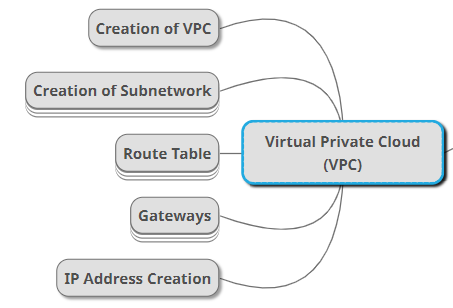
Elastic Load Balancing:- Administrators can balance network traffic by using the Elastic Load Balancing (ELB) service, which comprises of the Network Load Balancer and Application Load Balancer.
Amazon Route 53 is a domain name system that AWS also provides and uses to point users to apps.

Amazon Direct Connect:- AWS Direct Connect enables an IT expert to create a dedicated connection between an on-premises data centre and the AWS cloud.
Developer Tools
SDK:- A developer can use AWS software development kits (SDKs) and command-line tools to deploy and manage apps and services. This comprises:
- Amazon's exclusive code interface, the AWS Command Line Interface.
- A developer can administer cloud services from Windows environments by using AWS Tools for Powershell.
- To test Lambda functions, developers can emulate an AWS environment using the AWS Serverless Application Model.
There are AWS SDKs for numerous platforms and programming languages, including:
- These include Android, iOS, Java, PHP, Python, Node.js, Ruby, and C++
Amazon API Gateway:- Applications can access data or functionality from back-end services using custom application programme interfaces (APIs) created, managed, and monitored by a development team using Amazon API Gateway. The API Gateway simultaneously manages hundreds of concurrent API calls.
Amazon Elastic Transcoder: AWS also offers a pre-packaged media transcoding service called Amazon Elastic Transcoder as well as a service called AWS Step Functions that shows the workflows for microservices-based applications.
A development team can build pipelines for continuous integration and delivery using services like:
- The AWS CodePipeline
- CodeBuild by AWS
- Use AWS CodeDeploy
- CodeStar AWS
AWS CodeCommit & AWS X-Ray: A developer can use AWS CodeCommit to store code in Git repositories and AWS X-Ray to assess the performance of applications that use microservices.
Monitoring and Management
AWS Config and AWS Config Rules allow administrators to control and monitor cloud resource configuration. Together with AWS Trusted Advisor, these technologies can assist an IT team in avoiding installations of cloud resources that are incorrectly configured and excessively expensive.
AWS CloudFormation and AWS OpsWorks: AWS's toolkit includes a number of automation options. An administrator can utilise AWS CloudFormation templates to manage infrastructure provisioning, and they can use AWS OpsWorks and Chef to automate system and infrastructure configurations.
Amazon CloudWatch and AWS CloudTrail: An AWS customer can use Amazon CloudWatch to keep track of user activity and API calls for auditing purposes as well as the AWS Personal Health Dashboard to monitor the health of resources and applications.
Security and Governance
AWS Identity and Access Management (AWS IAM):- Is one of the cloud security services that AWS offers. It enables administrators to specify and control user access to resources.
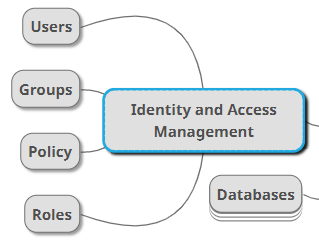
AWS Directory Service: An administrator can also use Amazon Cloud Directory to build a user directory or use AWS Directory Service to link cloud resources to an already-existing Microsoft Active Directory. An organisation can also create and administer policies for numerous AWS accounts using the AWS Organizations service.
AWS Inspector:- Tools that automatically evaluate potential security threats have also been introduced by Amazon Web Services, under the name Amazon Inspector. An AWS infrastructure is examined by Amazon Inspector for flaws that could jeopardise security and compliance.
Amazon Macie:- Machine learning (ML) technology is used by Amazon Macie to safeguard sensitive cloud data.
Along with providing software- and hardware-based encryption, defending against DDoS assaults, supplying Secure Sockets Layer (SSL) and Transport Layer Security (TLS) certificates, and filtering potentially hazardous traffic to web applications, AWS also offers tools and services in these areas.
AWS Management Console:- Is a graphical user interface (GUI) for AWS that is browser-based. The management console can be used to manage security credentials, cloud computing resources, and cloud storage resources. All AWS resources can be accessed through the AWS Console.
Big Data Management and Analytics
Big data analytics and application services are available on AWS in several forms. This comprises:
- Amazon Elastic MapReduce (AWS EMR): This service provides a Hadoop framework for handling enormous amounts of data.
- Hue: Hue is an open source Hadoop online user interface. Utilizing Hive, Pig, and many other tools that are a part of the Hadoop and EMR ecosystem is made possible by Hue for both technical and non-technical users.
- Amazon Kinesis: offers a number of tools for handling and analysing streaming data.
- AWS Glue: This service manages tasks involving extract, transform, and load.
- Amazon Elasticsearch Service: This service makes it possible for a team to use the open source Elasticsearch tool for activities like log analysis and application monitoring.
- Amazon Athenafor S3: enables data querying by analysts.
- Amazon QuickSight: aids in data visualisation for analysts.
Artificial intelligence
In addition to packaged AI-based apps, AWS provides a variety of platforms for developing and delivering AI models. Among the tools in the Amazon AI toolkit are:
- Amazon Lex: for text- and voice-based chatbots
- Amazon Polly: This tool converts text to speech; and
- Amazon Transcribe: is a speech-to-text service that makes it simple for developers to include speech-to-text functionality into their apps.
- Amazon Rekognition: Amazon Rekognition provides computer vision (CV) capabilities that are pre-trained and customisable to extract data and insights from your photos and videos.
Machine Learning
AWS also offers tools for developers to create intelligent apps that make use of sophisticated algorithms and machine learning technologies.
Amazon SageMaker: A cloud machine learning platform called SageMaker was introduced in November 2017. Machine learning models can be created, trained, and deployed in the cloud by developers using SageMaker. Developers can also use SageMaker to install machine learning models on embedded systems and edge devices.
Amazon Forecast: This item aids in improving the predictability of ML models.
Amazon Translate: Languages are translated using Amazon Translate in NLP and ML.
Amazon Personalize: uses machine learning to generate a variety of personalised recommendations.
Amazon Augmented AI: Amazon Human review is implemented in ML models as part of enhanced AI.
AWS Deep Learning Amazon Machine Images (AWS AMI): Using clusters of graphics processing units (GPUs) or compute-optimized instances, developers can build and train specialised AI models using AWS Deep Learning Amazon Machine Images (AMIs).
MXNet and TensorFlow: deep learning development frameworks are also available through AWS.
The Alexa Voice Services are powered by AWS technology on the consumer side, and developers can create voice-based apps for Echo devices using the Alexa Skills Kit.
Mobile Development
AWS Mobile Hub: The AWS Mobile Hub provides a range of tools and services for those who create mobile applications, including the AWS Mobile SDK, which includes libraries and code snippets.
Amazon Cognito and Amazon Pinpoint: A mobile app developer can use Amazon Cognito to control user access to mobile apps and Amazon Pinpoint to communicate with app end users via push notifications and track the results of those efforts.
Messages and Notifications
Simple Queue Service (SQS) by Amazon: AWS messaging services offer essential user and application communication. A managed message queue called Amazon Simple Queue Service (SQS) is used to deliver, store, and receive messages amongst distributed application components to make sure each one functions as it should.
Simple Notification Service (SNS): A company can deliver publish/subscribe messages to endpoints, such as customers or services, using the Amazon Simple Notification Service (SNS). Push messaging to mobile devices is made possible by a mobile messaging function included in SNS.
Simple Email Service (SES): A platform for sending and receiving emails is offered by Amazon Simple Email Service (SES), which is used by marketers and IT professionals.
AR & VR (Augmented Reality and Virtual Reality)
AWS's Amazon Sumerian service provides augmented reality (AR) and virtual reality (VR) development capabilities. Without any programming experience or ability to produce 3D images, users of Amazon Sumerian can construct AR and VR applications. Users of the service can also test and publish applications online. Uses for Amazon Sumerian include:
- 3D web applications
- E-commerce & sales applications
- Marketing
- Online education
- Manufacturing
- Training simulations
- Gaming
Internet of Things:-
AWS IoT: AWS also offers a range of services that facilitate the adoption of the internet of things (IoT). A back-end infrastructure for managing IoT devices and data ingestion to other AWS storage and database services is offered via the AWS IoT service.
The AWS IoT Button:- Is hardware that offers some IoT capability.
AWS Greengrass: IoT devices now have access to AWS compute power thanks to AWS Greengrass.
Other Services:
A variety of SaaS options for business productivity are offered by Amazon Web Services, including:
- Amazon Chime: allows for cross-platform text-based conversations, calls, and online video meetings.
- Amazon WorkDocs: this is a service for sharing and storing files.
- Amazon WorkMail: This is an email solution for businesses that includes a calendar.
Streaming
Amazon WorkSpaces&Amazon AppStream: Two services that allow developers to stream desktop applications from Amazon Web Services (AWS) to a user's web browser are Amazon WorkSpaces, a remote desktop-as-a-service platform, and Amazon AppStream.